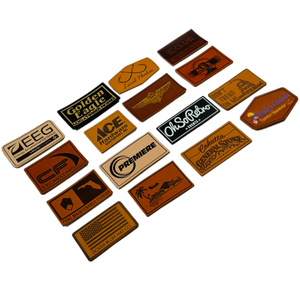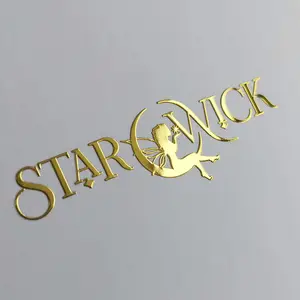An embossed logo is a raised or three-dimensional design created on a material, typically using a die or stamp. The logo is pressed onto the material using a die or stamp, creating a raised impression of the design. Embossed logos are used in branding and marketing, as they provide a visually appealing way to showcase a company's logo or design.
Embossed logos can be created by dry embossing and heat embossing. Dry embossing involves using a die or stencil to create the design on the material and then using an embossing tool to press the design into the material. Heat embossing involves stamping the design onto the material using a special ink and then applying heat to the ink to create a raised impression.
Advantages of Using Embossed Logos
Embossed labels provide a tactile element, allowing individuals to feel the raised design. This sensory engagement adds a layer of sophistication and a memorable touch to the brand. The raised effect of an embossed logo creates shadows and highlights, making the design more visually striking. Its heightened visibility ensures the logo stands out and captures attention more effectively. Embossing imparts a sense of luxury and quality to the logo. The three-dimensional effect suggests attention to detail and craftsmanship, enhancing the brand's overall perception as high-end and refined. Embossed graphics are often more resistant to wear and tear than flat, printed designs. They are less prone to fading or scratching, contributing to a longer-lasting, more resilient brand representation.
Embossing allows brands to create a unique identity. The three-dimensional aspect sets the logo apart from conventional, flat designs. Embossing can be applied to various materials, including paper, cardboard, leather, and plastics. This versatility enables brands to maintain a consistent and impactful logo across various products and marketing materials. Embossed logos can be reproduced in print, maintaining their distinctive raised appearance. This adaptability ensures consistency across both digital and physical brand representations.
Features of Embossed Logos
Embossed printing has raised or elevated elements that create a three-dimensional effect. This depth adds a tactile quality, making the logo visually engaging and memorable. The embossing process imparts a tactile texture to the logo, allowing individuals to feel the raised portions. This sensory experience enhances the logo's impact and provides a unique interaction for consumers. The raised areas of an embossed logo create shadows and highlights, intensifying the contrast between the design and the background. This visual interplay adds depth and dimension, striking the logo more visually. Embossing is customizable, accommodating intricate patterns, textures, and detailed designs.
Embossing can be applied to various materials, including paper, cardboard, leather, and metal. This adaptability ensures that embossed logos maintain consistency across diverse brand materials and products. Embossed logos are often more durable than flat, printed logos. The raised elements are less susceptible to wear, ensuring the logo maintains its integrity over time, even in high-use applications.











































 浙公网安备 33010002000092号
浙公网安备 33010002000092号 浙B2-20120091-4
浙B2-20120091-4